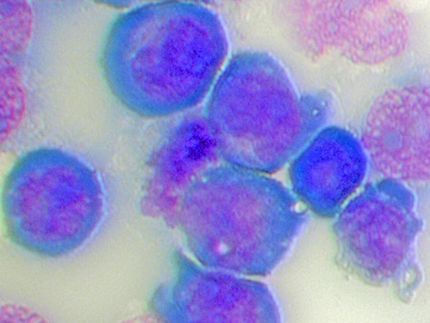New cause for the development of leukemia discovered
Novel experimental model
Researchers at the University Hospital Tübingen have successfully identified a molecular cause of leukemia development. They have thus established a novel experimental model that will enable patients with leukemia to be treated more specifically in the future.

Symbolic image
pixabay.com
Severe congenital neutropenia (CN) is a pre-leukemic bone marrow failure syndrome that can develop into acute myeloid leukemia (AML). This rare congenital disorder of hematopoiesis is an immunodeficiency associated with a reduced number of granulocytes and functional defects of these same granulocytes. Early after birth, severe bacterial infections develop in affected individuals. The only possible therapy is the lifelong treatment with recombinant growth factors (proteins), which must be injected daily. 20 percent of patients with congenital neutropenia develop leukemia in the first decades of life.
Researchers led by Professor Dr. Julia Skokowa, Dr. Benjamin Dannenmann and Dr. Maksim Klimiankou from the Department of Hematology, Oncology, Clinical Immunology and Rheumatology at the University Hospital of Tübingen have now succeeded in unraveling the mechanism of leukemia development and identifying a new therapy. As head of Reference Laboratory for Diagnostics, Biobanking and Research of the Severe Chronic Neutropenia International Registry (SCNIR), Prof. Skokowa was able to analyze large amounts of data from patients with rare diseases for her research project.
Since there are no animal models for neutropenia and it is difficult to obtain sufficient bone marrow cells from affected patients, the researchers developed a novel experimental model for studying leukemia: They used molecular methods to transform the blood cells of neutropenia patients back into an early embryonic stage – into so-called induced pluripotent stem cells (iPS cells). In cell cultures, they generated hematopoietic cells from these stem cells. Using a new method of gene modifications, so-called, the “genetic scissors” (CRISPR/Cas9), they added the gene mutation to the iPS cells. In this way, the experts succeeded in generating leukemia cells in cell cultures that are very similar to the primary ones of neutropenia patients.
The researchers also investigated the effects of genes that are present in much greater quantities in leukemia cells than in healthy cells. To study this effect on leukemia growth, the candidate genes were inactivated in the iPS cells generated in the laboratory using CRISPR/Cas9 genetic scissors. It was discovered that inactivating a single protein – BAALC – leads to the death of the leukemia cells. By analyzing the activation of all BAALC-dependent genes, Prof. Skokowa and her team were able to decipher the molecular mechanism of leukemia development and identify a small molecule inhibitor (CMPD1) with therapeutic effect. This novel drug kills the leukemia cells without attacking the healthy hematopoietic cells and can thus be used to treat leukemias in clinical trials.
Original publication
Other news from the department science

Get the life science industry in your inbox
By submitting this form you agree that LUMITOS AG will send you the newsletter(s) selected above by email. Your data will not be passed on to third parties. Your data will be stored and processed in accordance with our data protection regulations. LUMITOS may contact you by email for the purpose of advertising or market and opinion surveys. You can revoke your consent at any time without giving reasons to LUMITOS AG, Ernst-Augustin-Str. 2, 12489 Berlin, Germany or by e-mail at revoke@lumitos.com with effect for the future. In addition, each email contains a link to unsubscribe from the corresponding newsletter.


















































